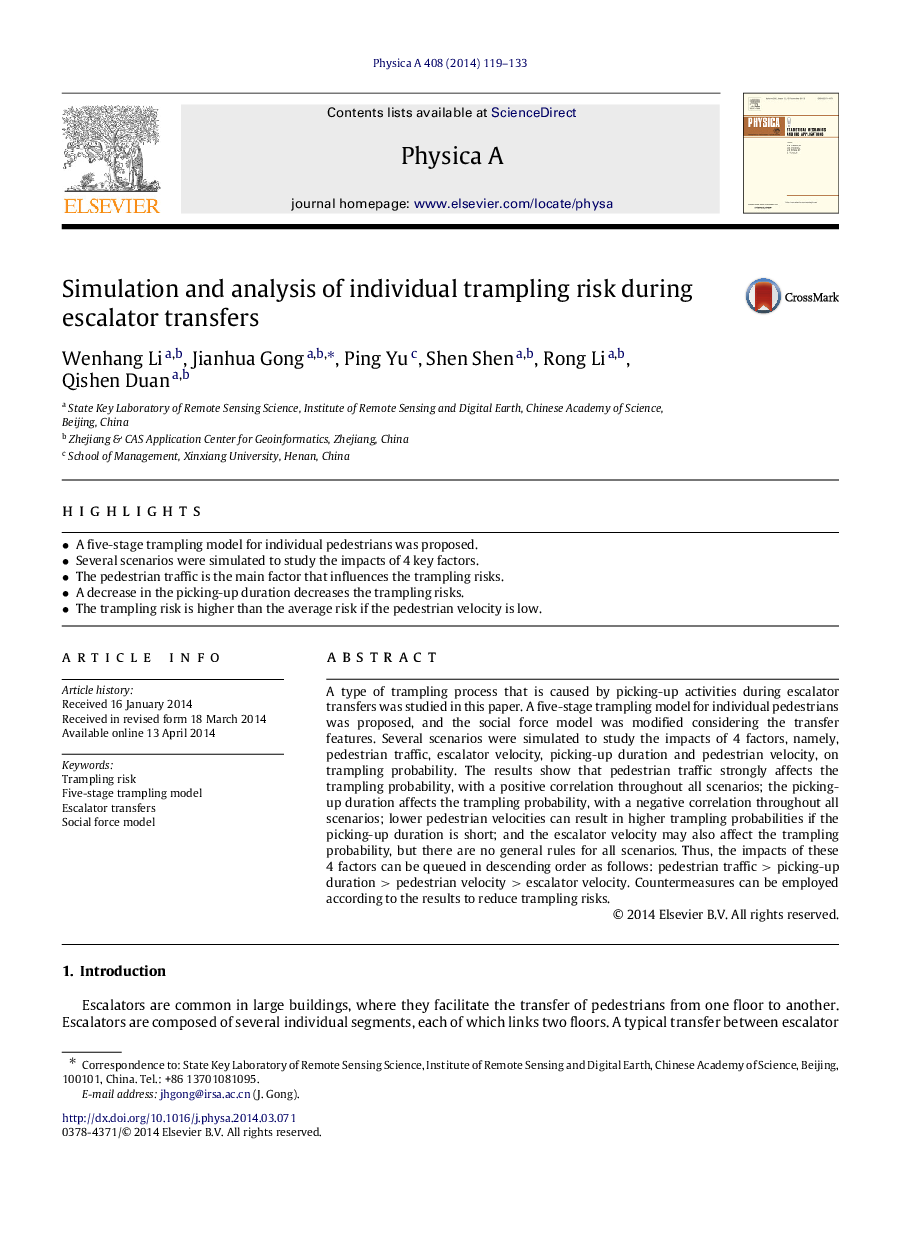| Article ID | Journal | Published Year | Pages | File Type |
|---|---|---|---|---|
| 973893 | Physica A: Statistical Mechanics and its Applications | 2014 | 15 Pages |
•A five-stage trampling model for individual pedestrians was proposed.•Several scenarios were simulated to study the impacts of 4 key factors.•The pedestrian traffic is the main factor that influences the trampling risks.•A decrease in the picking-up duration decreases the trampling risks.•The trampling risk is higher than the average risk if the pedestrian velocity is low.
A type of trampling process that is caused by picking-up activities during escalator transfers was studied in this paper. A five-stage trampling model for individual pedestrians was proposed, and the social force model was modified considering the transfer features. Several scenarios were simulated to study the impacts of 4 factors, namely, pedestrian traffic, escalator velocity, picking-up duration and pedestrian velocity, on trampling probability. The results show that pedestrian traffic strongly affects the trampling probability, with a positive correlation throughout all scenarios; the picking-up duration affects the trampling probability, with a negative correlation throughout all scenarios; lower pedestrian velocities can result in higher trampling probabilities if the picking-up duration is short; and the escalator velocity may also affect the trampling probability, but there are no general rules for all scenarios. Thus, the impacts of these 4 factors can be queued in descending order as follows: pedestrian traffic >> picking-up duration >> pedestrian velocity >> escalator velocity. Countermeasures can be employed according to the results to reduce trampling risks.
